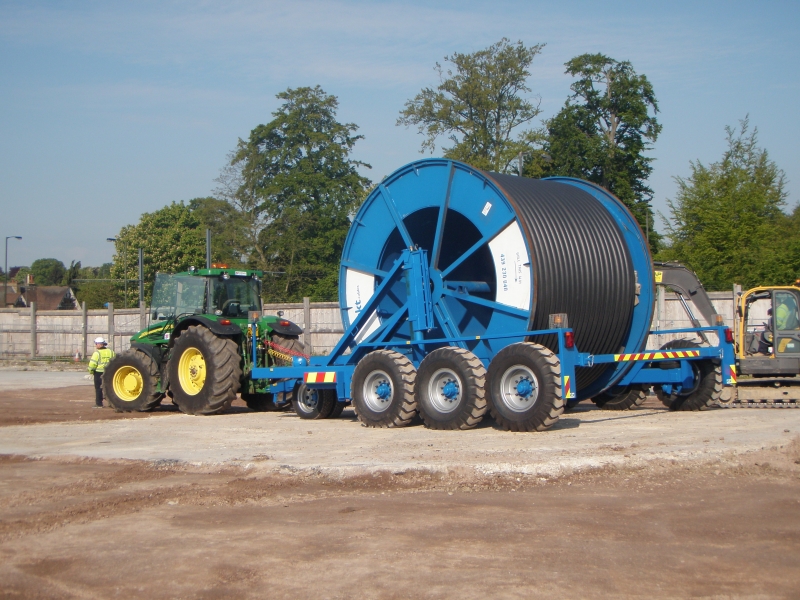The RF cable is a cable that transmits electromagnetic energy in the RF range. The RF cable is an indispensable component in various radio communication systems and electronic devices. It is widely used in wireless communication and broadcasting, television, radar, navigation, computer and instrumentation.
It is understood that the structure of RF cables is various and can be classified according to different ways and types.
Classified by cable structure
(1) Coaxial RF cable
Coaxial RF cables are the most common type of construction. Since the inner and outer conductors are in a concentric position, the electromagnetic energy is confined to propagate in the medium between the inner and outer conductors, so that it has the advantages of small attenuation, high shielding performance, use frequency bandwidth and stable performance. Usually used to transmit RF energy from 500 kHz to 18 GHz.
Currently, there are two types of commonly used RF coaxial cables: 50Ω and 75Ω RF coaxial cables. The characteristic impedance 75Ω RF coaxial cable is commonly used in CATV networks, so it is called CATV cable, and the transmission bandwidth can reach 1GHz. Currently, the transmission bandwidth of common CATV cable is 750MHz.
(2) Symmetrical RF cable
Symmetrical RF cable circuits have an open electromagnetic field. Due to the radiant electromagnetic energy at high frequencies, the attenuation is increased and the shielding performance is poor. In addition, the influence of atmospheric conditions is often used. Symmetrical RF cables are primarily used in the case of low RF or symmetric feeds.
(3) Spiral RF cable
The conductor in the coaxial or symmetrical cable can sometimes be made into a spiral coil shape, thereby increasing the inductance of the cable, thereby increasing the wave impedance of the cable and delaying the transmission time of the electromagnetic energy. The former is called a high resistance cable, and the latter is called a high resistance cable. For delay cables. If the spiral coils are wound at different densities in the length direction, a varistor cable can be made.
Classified by insulation type
(1) Solid insulated cable
The solid high frequency dielectric is filled between the inner and outer conductors of such a cable, and most of the soft coaxial RF cables use this type of insulation.
(2) Air insulated cable
In the insulation layer of the cable, most of the volume is air except for a part of the solid medium supporting the inner and outer conductors. Its structural feature is that it does not pass through the dielectric layer from one conductor to the other. Air insulated cables have very low attenuation and are a common type of structure used at ultra high frequencies.
(3) Semi-air insulated cable
This type of construction is an insulation type between the two, the insulation is also a combination of air and solid medium, but from one conductor to the other through the solid medium layer.
Classified by insulation
Plastic insulated cable, rubber insulated cable and inorganic mineral insulated cable.
Classified by softness
Soft cable, flat cable and rigid cable.
Classified by transmission power
Low power below 0.5 kW, medium power of 0.5-5 kW, high power cable of 5 kW or more.
Classified by product use characteristics
Low attenuation, low noise, small size and stable phase cable.

Concerned about surprises
Label: Multiple classification methods for RF cables
Previous: Dehumidifier to protect the rainy seasons Next: Common parameters and models of terminal lines
The range of MASHINE cable drum trailers are equipped with braking and road lighting systems to conform with EEC Directives and are designed to travel fully laden at road speed - for safe and easy cable drum handling all MASHINE cable drum trailers are fitted with hydraulic hand pump operated lift/lower systems as standard.
When the cable drum is lifted and raised, mechanical locks ensure cable drum security in transit - suitable for LV, HV, EHV, fibre optic, street lighting and rail cable pulling and cable laying installations.
T&D meet the Cable Drum Trailer requirements of the DNO, utility and cable laying contractors enabling underground cable installations within the LV-HV power and telecommunications industries.
Cable drum trailers are available for low and 11-33kV high voltage cables, street lighting cables, BT cables and fibre optic cable installations.

Cable Drum Trailer
Cable Drum Trailer,Hydraulic Drum Trailer,Cable Reel Drum Trailers,Extendable Trailer
NINGBO MARSHINE POWER TECHNOLOGY CO., LTD. , https://www.marshine-power.com